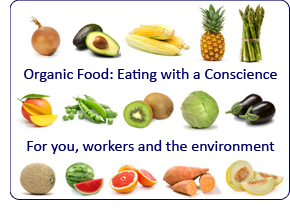19
Jul
New Mobile App to Help Consumers Choose GM Free Food
(Beyond Pesticides, July 19, 2010) The Washington D.C. based Center for Food Safety (CFS) has unveiled an application for mobile phones to help shoppers quickly and easily identify foods made with ingredients from genetically modified (GM) organisms. Many consumers are leery of GM foods, yet unfortunately producers are not required to label products that contain GM ingredients, leaving consumers guessing about what they are eating. To aid consumers where regulatory oversight has failed, CFS created its new True Food Shoppers Guide Mobile Application available for free through iTunes and Android Market.
GM foods were first introduced into the U.S. food supply in 1994, promising to put an end to world hunger. Using genetic engineering, scientists were expected to create drought and salt tolerant crops, with higher yields and nutrient content. These crops never materialized, however, and industry giants such as Monsanto have collected huge revenues selling insecticide producing and herbicide resistant crops to American farmers. These crops have not only failed in their promise to boost crop yields, but studies have shown that they increase the use of pesticides, and create herbicide resistant weeds. While disillusionment with GM crops grows, the US government continues to bow to industry lobbyists, refusing to require labeling on GE foods.
The best way to avoid GE foods is to always buy organic. When the USDA proposed its original organic rule in 1998 that allowed GM crops, it received a record number of public comments criticizing the regulation. As a result, the Department in its final rule classified genetically modified organisms as “excluded methods,” thus requiring all food certified as organic to be free of GM crops. In addition to being free of GM crops, organic foods are also grown without the use of chemical fertilizers, and pesticides that can be very harmful to humans and the environment. Organic livestock are grown without the use of artificial growth hormones or a constant stream of antibiotics. In June 2010, Beyond Pesticides launched its Eating with a Conscience website, which educates consumers about the importance of eating organic food whenever possible.
In some markets organic foods are not always available, and consumers must rely on conventional products. CFS’s new app is designed to help consumers “quickly and easily identify foods made with ingredients from genetically modified organisms.” The True Food Shoppers Guide offers tips on avoiding GM ingredients, as well as listing brands to look for. It also includes a dairy guide to aid consumers in choosing rBGH free dairy products. The app also contains information on the dangers of GM foods and the benefits of organic foods. The Shopper’s Guide was complied primarily from direct communication with producers.
In addition to providing information to consumers, CFS’s Shopper’s Guide also makes it easy to take action. The app can be used to call or email companies listed in the “Red” (those who do not avoid GM ingredients in their products) so that consumers can urge companies to stop selling genetically modified food.
To download the app from iTunes or Android Market, search for the term “True Food”. For those who do not have a smart phone, Center for Food Safety is working on a web version, and a printable PDF shoppers guide is also available.















